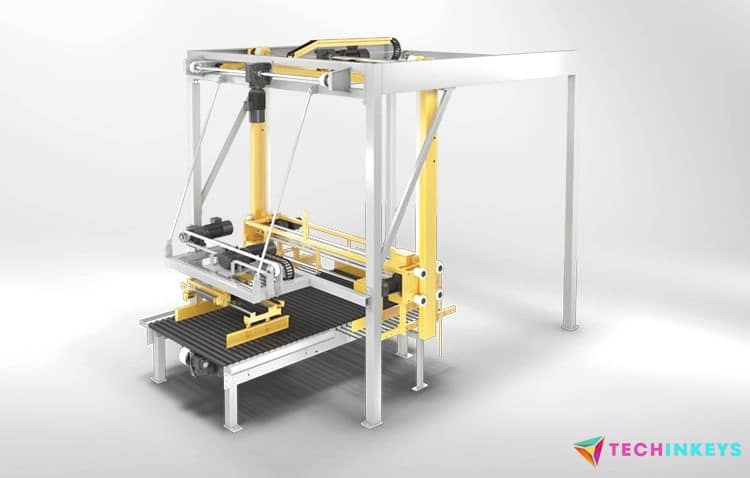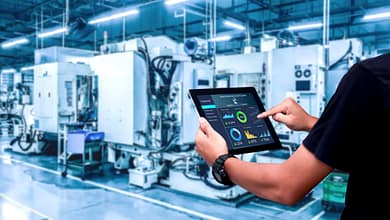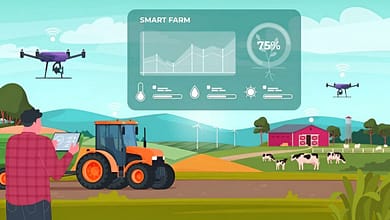
Palletizing technology has always been an essential part of shipping and storage, helping to properly handle goods and guarantee on-time deliveries.
These technologies are more important than ever before since recent developments have reshaped our perspectives on and how we utilize them.
Using palletizing technology necessitates considering not just its immediate effects, but also the industry’s and the equipment’s possible effects in the future.
Stay ahead of the curve by this guide to future trends in palletizing technology as a resource for your workplace innovation efforts.
Table of Contents
How Palletizing Has Changed Over Time
The evolution of palletizing technology is an interesting story of change and progress.
In its early days, palletizing was a time-consuming and physically demanding procedure. Physically stacking and arranging boxes and items onto pallets was a hard and risky process that workers had to suffer.
However, manual labor was drastically reduced with the arrival of automated palletizing equipment, which transformed this area.
Palletizers take care of the monotonous tasks in the supply chain so that your staff may concentrate on their strengths.
People can stay healthy and engaged in production even when they’re exhausted from wrapping if they’re assigned to another activity in the shipping chain.
When used correctly, palletizers can stack goods rapidly and effectively, guaranteeing uniformity and minimizing the likelihood of harm.
The logistics industry has reached a major milestone with the transition from manual to automated palletizing, which paves the way for even more revolutionary developments.
Current State of Palletizing Technology
Current palletizing technology has advanced to unprecedented levels thanks to state-of-the-art advancements. The most up-to-date palletizers are equipped with sophisticated robotics, AI, and ML capabilities.
Palletizers are equipped with advanced technology that allow them to precisely handle a wide range of commodities, including delicate items and large loads.
The enhancement of efficiency is one of the most significant advantages of these advancements.
There is far less downtime and far higher throughput with automated systems because they can run continuously. Further optimization of operations based on real-time data is made possible by these systems through the application of artificial intelligence and machine learning, which further enhances productivity.
The decrease in labor costs is another significant advantage. Companies can save money and improve operational efficiency by automating the palletizing process so that workers can focus on more strategic activities.
Future Trends in Palletizing Technology
Keeping in mind that new trends can develop out of nowhere is crucial when trying to evaluate future trends in palletizing technology. Nonetheless, you can keep tabs on the market, think about how innovation may affect your employees in the future, and prepare for the worst.
Palletizing technology is only going to become better from here on out. The incorporation of IoT devices is one of the most anticipated trends.
Palletizers that are Internet of Things (IoT) enabled may talk to other smart devices in the warehouse, making everything work together. In order to optimize the entire supply chain process, this link permits real-time monitoring and modifications, as already stated.
The utilization of collaborative robots is another developing pattern. These robots can do mundane jobs so that humans can concentrate on higher-level projects.
Also, developments in AI and ML will probably keep playing a big part, since these technologies were made to enhance and progress the shipping business.
The purpose of machine learning’s “learning” component is to foster development and new ideas for the future. As a result, palletizers can gain insight from their mistakes and improve their performance and flexibility as time goes on.
More intelligent and linked palletizing systems are on the horizon, thanks to these trends, which bode well for future productivity and efficiency.
Effect on Cost Savings, Efficiency, and Labor
Implications for shipping and warehousing operations are substantial when new palletizing technology are implemented. Efficiency gains are among the most visible effects.
By eliminating bottlenecks and processing high volumes of items more quickly than manual techniques, automated palletizers guarantee on-time deliveries.
There will be financial savings as a result of this efficiency.
Businesses can save a ton of money by cutting down on labor costs and mistakes in the palletizing process. Furthermore, it should not be overlooked that the utilization of sophisticated technology improves worker safety by decreasing the likelihood of injuries sustained on the job due to physical labor.
Having the capability to track and enhance processes in real-time also helps in saving money and running efficiently. You can get a full picture of your supply chain in real-time with the help of the Internet of Things and state-of-the-art robotics, which allows you to make better decisions faster.
Incorporating state-of-the-art palletizing technology into shipping and warehousing operations ultimately benefits all parties involved by increasing productivity while decreasing overhead.
Challenges and Factors to Consider
The advantages of modern palletizing technology are easy to see, but there are also some things to bear in mind and obstacles to overcome. The high expense of entry is one of the main obstacles.
A substantial financial investment may be necessary to implement automated systems and advanced technology, which could be a deterrent for certain businesses. It may also be difficult and time-consuming to incorporate new technology into preexisting operations.
Organizations should provide sufficient training to their employees so that they can effectively use and manage these systems.
The possibility of opposition to change is another factor to think about. For fear of losing their jobs or having their daily routines disrupted, employees may be reluctant to embrace new technology.
To ensure a smooth rollout, it is essential to address these issues through well-designed training programs and open lines of communication.
The good news is that you can overcome these challenges—and there will be many more—by carefully considering your resources and your business plan as you prepare for the future.
Navigating Future Changes
As palletizing technology evolves in the future, logistics specialists will be crucial.
Finding the right technologies and putting them into action successfully requires their knowledge and strategic insights.
Logistics workers may promote operational efficiency and cost savings by being educated about the latest trends and innovations.
When it comes to operational productivity, cost savings, and efficiency, the present level of palletizing technology is second to none.
The moment to embrace and incorporate these technologies is now, as we are living in the future.



